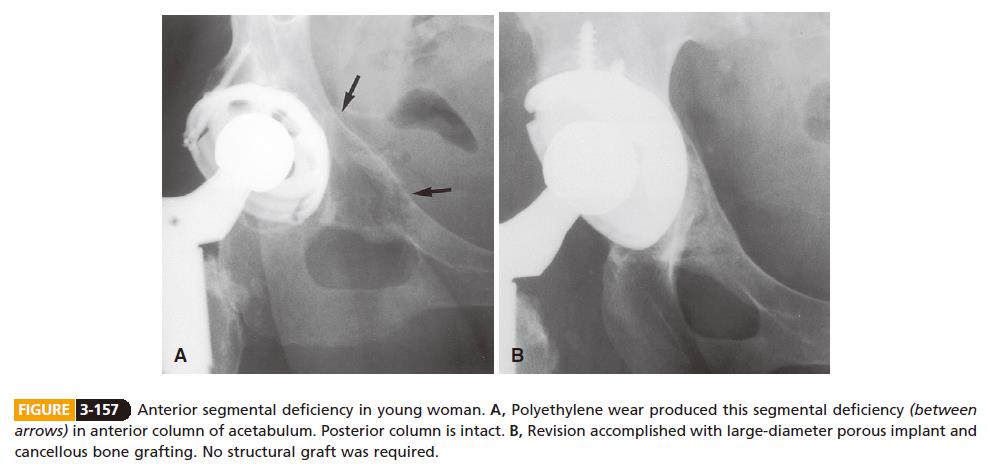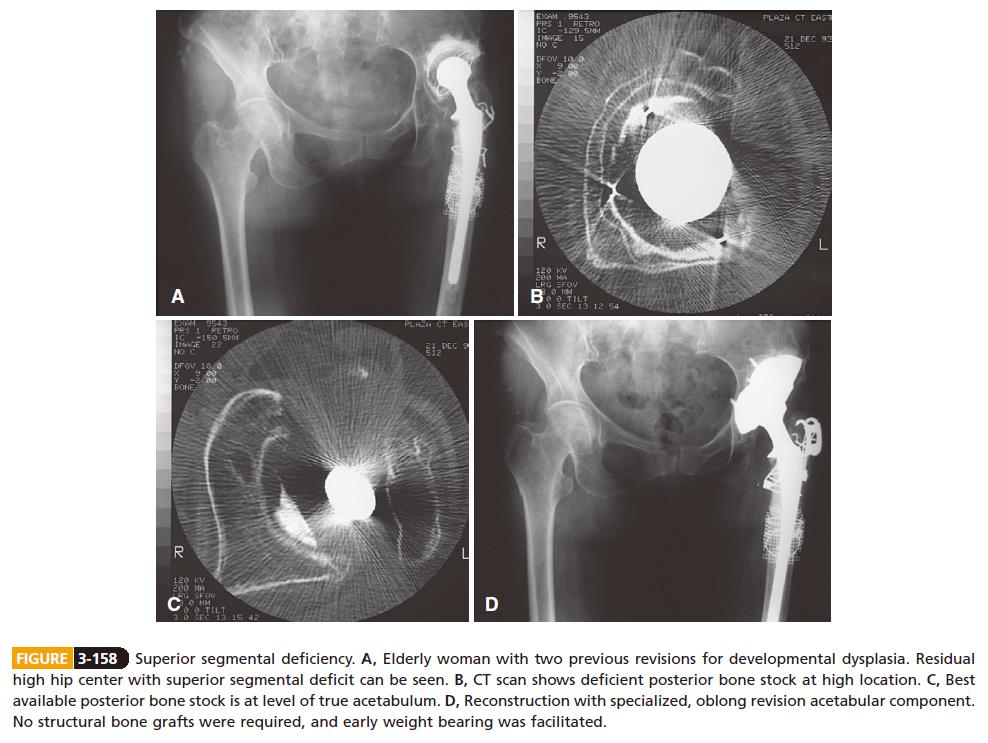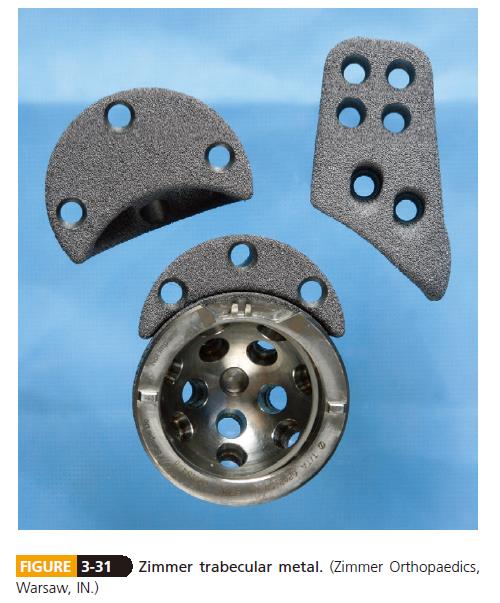Treatment of Acetabular Segmental Deficits (1)
 Oct. 19, 2020
Oct. 19, 2020
Treatment of Acetabular Segmental Deficits
Many segmental acetabular deficits involve only a small area of the rim. These deficits seldom compromise prosthetic stability and usually can be disregarded. Segmental deficits in the anterior column usually do not require reconstruction (Fig. 3-157).

If the prosthesis is contained by bone posteriorly and superiorly, the center of rotation of the hip is restored, and component stability is achieved, then structural augmentation of the acetabulum is not required. In addition, central segmental deficits can be managed similarly to central cavitary deficits. Particulate bone grafts are contained by intact soft tissues over the medial wall defect and incorporate readily. Structural medial wall bone grafts are seldom necessary. Some isolated superior segmental deficits can be managed with an oblong revision acetabular component. This prosthetic solution allows restoration of the hip center to an anatomical location without the need for additional structural augmentation (Fig. 3-158). Implantation of these devices requires special instruments and is technically more challenging than for hemispherical implants. There is a tendency to place such implants in an excessively vertical position. A few small series have reported successful use of these implants in carefully selected patients.

Structural augmentation is needed most commonly for a large posterior or superior segmental deficiency that compromises the stability of the implant or that requires superior displacement of the center of rotation of the hip more than 2.5 cm to place the implant against intact bone. In young patients, grafting of smaller deficiencies may be considered to make anticipated future revision procedures easier. In most reported series, results of structural bone grafting for segmental deficiencies have been best when at least 50% of the support of the revision acetabular component was provided by host bone rather than graft. Tantalum augments are advantageous because rigid initial fixation of the augment can be achieved, resorption of the augment is not a concern (unlike with allograft), and multiple augment sizes and configurations are available to accommodate complex bone loss and deformity (see Fig. 3-31). Short-term outcomes are encouraging with these devices, but longer-term follow-up is necessary.

Note: this article comes from CAMPBELL’S OPERATIVE ORTHOPAEDICS by S. Terry Canale James H. Beaty.













